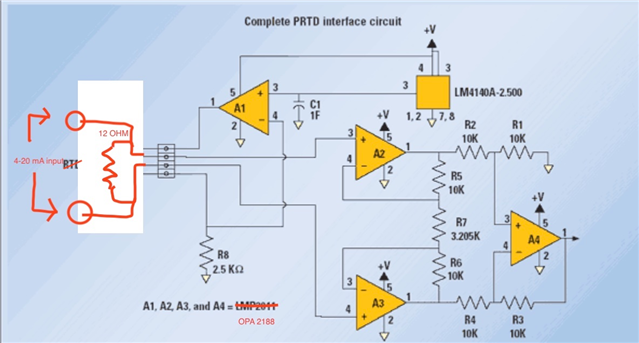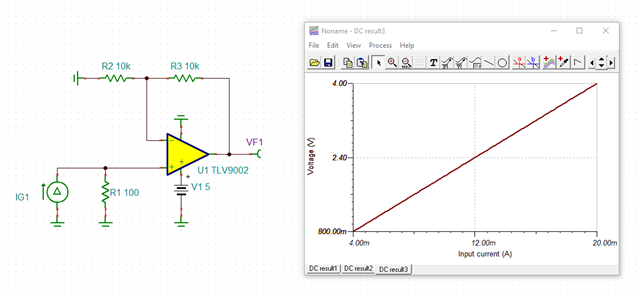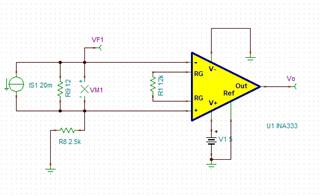Other Parts Discussed in Thread: TINA-TI, OPA4188, INA333, INA827
I have tried RTD Simulator reference design SNOA838 with replacing OPA2188 which works pretty good in simulator as well as test Circuit. When I try to Convert same circuit for Current Measurment 4-20mA I found it work good with TINA Simulator but test Circuit does not work
The change made to circuit is instead of internal current source we used External current source 4-20mA and fixed resistor of 12 Ohms instead of RTD sensor
Below is a link to reference design of TI.




